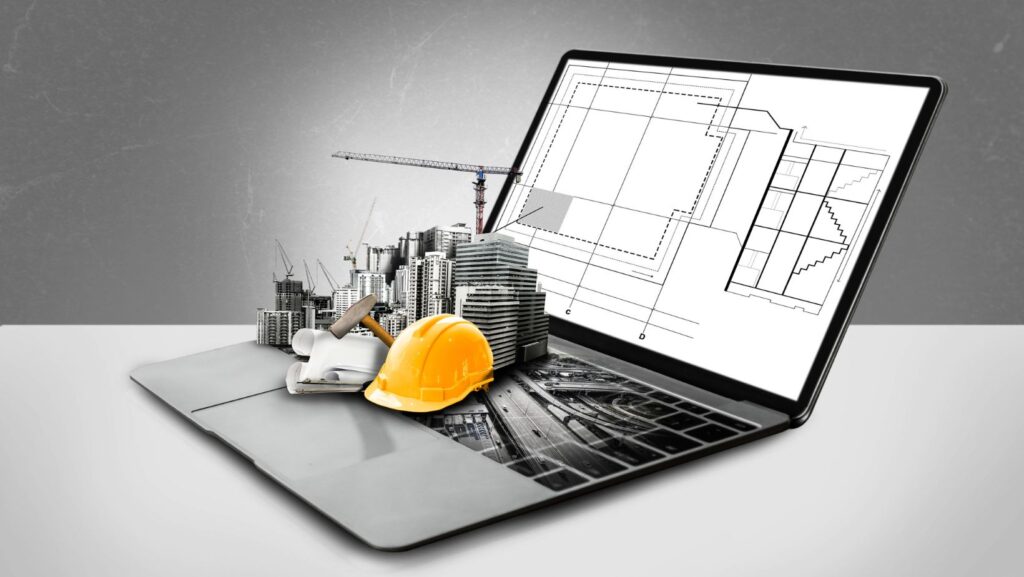In the ever-evolving world of design and construction, architectural technology stands as a pivotal cornerstone. It’s the ingenious fusion of science and art, a dynamic discipline that breathes life into architectural concepts by transforming them into tangible, functional structures.
From the towering skyscrapers that punctuate our cityscapes to the innovative green homes that redefine sustainable living, architectural technology plays a crucial role. It’s not just about creating visually stunning designs, but also about ensuring those designs are viable, sustainable, and efficient.
Architectural Technology
Intricate connections between architectural innovations and the passage of time compose the evolution narrative of architectural technology. The transformation showcases the journey from ancient building methods to the embracing of modern designs and tools.
From Ancient Techniques to Modern Innovations
 The genesis of architectural technology traces back to ancient times, such as the Egyptian, Greek, and Roman empires. Ancient wonders, like the Egyptian Pyramids or the Roman Colosseum, exemplify incredible architectural prowess years before modern technologies. Employing nothing more than crude tools and remarkable ingenuity, they managed to construct remarkable monuments.
The genesis of architectural technology traces back to ancient times, such as the Egyptian, Greek, and Roman empires. Ancient wonders, like the Egyptian Pyramids or the Roman Colosseum, exemplify incredible architectural prowess years before modern technologies. Employing nothing more than crude tools and remarkable ingenuity, they managed to construct remarkable monuments.
Fast forward to the 19th century, cast-iron and steel architectures portrayed a marked shift from traditional stone and wood structures. It affirmed the start of Modernism, encouraging structures such as the Eiffel Tower and skyscrapers that dot city skylines today. The 20th century witnessed a dramatic rise in technological advancements which played a transformative role in architectural practices. State-of-the-art tools facilitated precision, design flexibility, and sustainability, making modern architectural masterpieces possible.
Key Components of Architectural Technology
Discussions and revelations regarding architectural technology often boil down to a few principal components. This section expounds on three of them; materials and sustainability, Building Information Modeling (BIM), and the software and tools architects frequently utilize.
Materials and Sustainability
Materials contribute substantially towards the facet of architectural technology. An architect’s choice of materials bears significant implications for a building’s overall sustainability. Contemporary architects often incorporate eco-friendly materials—such as bamboo, straw bale, and recycled plastic—in their designs, reducing environmental impact and promoting energy efficiency. Examples include the Straw Bale House in Australia and the Waterfall Building in Canada, both of which employ sustainable materials and maximize energy conservation.
Building Information Modeling (BIM)
Another vital aspect of architectural technology comes in the form of Building Information Modeling. BIM offers architects a 3D model-based process that combines architectural, engineering, and construction information into one comprehensive model, improving collaboration and accelerating project completion. Numerous architectural firms rely on BIM for enhanced precision and transparency; for instance, Autodesk’s celebrated Sydney Opera House renovation implemented BIM, achieving project cohesion and streamlining processes.
The Role of Technological Advancements in Architecture
Technological advancements play a pivotal role in modern architectural practices, revolutionizing established methodologies, ushering in innovative strategies, and introducing efficient tools.
Smart Buildings and Automation
 With advancements in technology, architectural designs correspondingly evolved, resulting in the advent of smart buildings. Buildings today integrate innovative controls and automated systems, optimizing energy efficiency and enhancing occupant comfort. For instance, automated heating, ventilation, and air conditioning (HVAC) systems adapt to varying temperatures, optimize energy usage, and enhance sustainability. Furthermore, intelligent lighting systems tailor light intensity in accordance with natural light conditions, thus aiding in the reduction of energy consumption.
With advancements in technology, architectural designs correspondingly evolved, resulting in the advent of smart buildings. Buildings today integrate innovative controls and automated systems, optimizing energy efficiency and enhancing occupant comfort. For instance, automated heating, ventilation, and air conditioning (HVAC) systems adapt to varying temperatures, optimize energy usage, and enhance sustainability. Furthermore, intelligent lighting systems tailor light intensity in accordance with natural light conditions, thus aiding in the reduction of energy consumption.
Automation in buildings also extends to security and safety systems. Buildings incorporate surveillance cameras, motion-activated sensors, and advanced fire-safety systems, all operated via centralized control units. Importantly, these automated systems not only optimize energy usage and assure safety, but also provide data insights that architects harness to refine future building designs.
Virtual Reality and 3D Modeling
Virtual Reality (VR) and 3D modeling represent another facet of technological advancements in architecture. These technologies enable architects to envision building designs in a three-dimensional context before translating them into reality.
Specifically, VR technology provides immersive building tour experiences, allowing architects and clients alike to envision the finalized structure before its actual construction. Such pre-visualization assists in making informed decisions about both aesthetic and functional aspects of the building. For example, the architect can alter the building layout or the client can choose different materials, all based on their VR experience.

